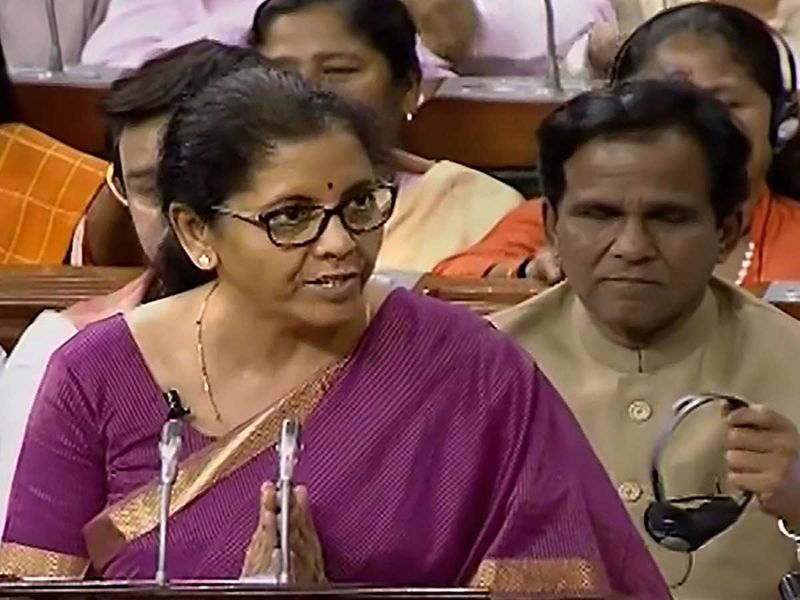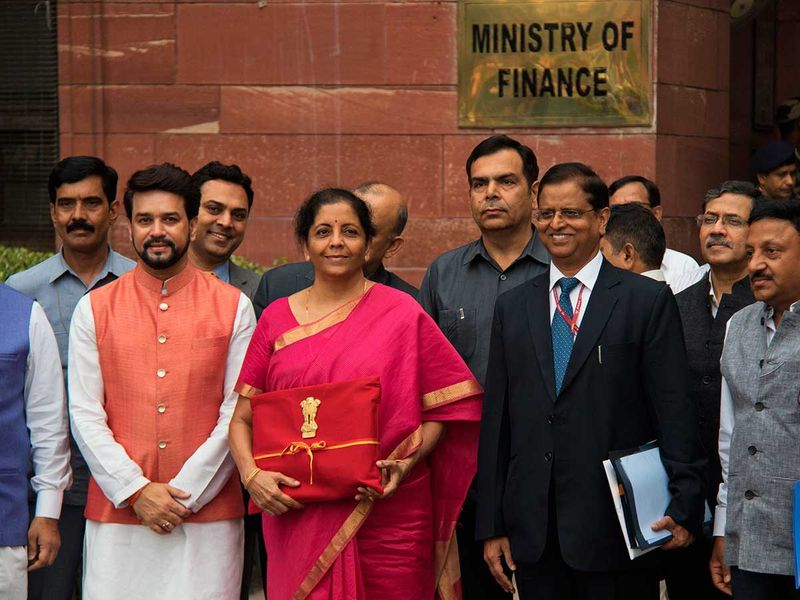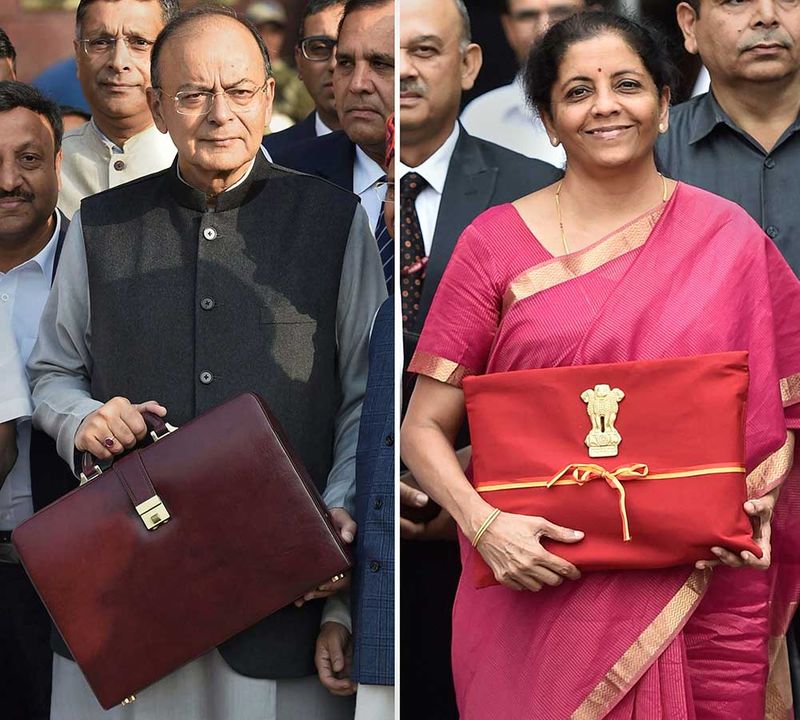Indian Finance Minister Nirmala Sitharaman presented her first budget in parliament on Friday, July 5, 2019: the first budget of Modi 2.0.
The fiscal deficit goal for the year that began on April 1 was lowered to 3.3% of gross domestic product from 3.4% set in February's interim plan, Finance Minister Nirmala Sitharaman said in her maiden budget in Parliament in New Delhi on Friday. That plan will in part be funded by increasing taxes on the wealthy and selling stakes in state-run companies.
Highest income bracket
"Those in the highest income brackets need to contribute more to the nation's development," Sitharaman said. She aims to raise 1.05 trillion ($15 billion) rupees from asset sales, compared with 900 billion rupees targeted previously.
Sitharaman said the nation needs 20 trillion rupees annual investment on infrastructure, and the government will be tapping the overseas bond market for funds.
India's benchmark 10-year bonds dropped 12 bps to 6.63% while the rupee pared losses.
GDP growth is forecast to rebound to 7% in the current fiscal year from 6.8% last year, the Finance Ministry said in a report on Thursday, mirroring a projection from the Reserve Bank of India. The central bank has cut interest rates three times this year to spur growth.
Petrol, diesel prices to increase
- Cess on petrol and diesel raised by Re 1 per litre
Gold
- Customs duty on gold increased to 12.5 per cent from existing 10 per cent
For Non-Resident Indians (NRIs)
- Aadhaar card for non-resident Indians (NRIs) with Indian passports to be issued after their arrival in India, without waiting for the mandatory 180 days.
- To provide NRIs seamless access to Indian equities, NRI portfolio investment route to be merged with foreign investment route.

Taxation
- Will levy tax deduction at source of 2% for cash withdrawals exceeding $146,000 per year
- Proposes relief in securities transaction tax
- Surcharges on individuals having taxable income of Rs 2 crore to Rs 5 crore; and Rs 5 crore and more have been raised.
- No merchant discount rate (MDR) charges on digital transaction made at big establishments having annual turnover of more than Rs 50 crore.
- Tax returns in electronic mode is being launched this year in a phased manner.
Banking
- State-owned banks proposed to be provided $10.2 bln of additional capital
- Will strengthen central bank's authority over shadow banks
- There is a need to give tax parity to non-banking finance companies

Will open up FDI in aviation, insurance, media and animation sectors
Important to get retail investors to invest in treasury bills
Will allow foreign investors to buy debt of listed real estate investment trusts
India to become a $5 trillion economy
India to invest heavily in infrastructure and job creation
The government will upgrade 125,000 kilometres of roads over the next five years at a cost of $11.6 billion
Railway infrastructure will need an investment of $72bln between 2018 and 2030
India will enter into aircraft financing and leasing activities
GDP borrowing
- Govt to borrow a gross 7.1 trn rupees via bonds in 2019/20
- Govt to borrow a net 4.73 trn rupees via bonds in 2019/20 Short term borrowing seen at 250 bln rupees in 2019/20
- Govt to buy back 500 bln rupees of bonds in 2019/20
Nirmala Sitharaman, India's first full-time woman finance minister, began the big day by ditching the British-era briefcase for a red cloth folder enclosed with a string and emblazoned with the national emblem - which was described by officials as the "bahi khata".
Departure from tradition
Chief Economic Advisor K. Subramanian said that it was a departure from "slavery of western tradition". The red cloth symbolises the 'bahi khaata' traditionally used in every Indian business set up to maintain accounts.
Sitharaman was seen carrying the red cloth wrapped budget papers that was neatly bound with the auspicious yellow and red ribbon. The Lion Capital shone brightly on top of the bahi khaata, as the first-time Finance Minister walked out of the North Block.
Traditionally until now all former Finance Ministers have carried their Budget Document in a hardbound leather briefcase that takes after the parallel British custom - much like many of India's laws and Parliamentary practices.

Even Piyush Goyal, who presented the Interim Budget in February had carried a briefcase of colour and size of his choice and posed for the iconic photograph outside Finance Ministry and then Parliament building.








